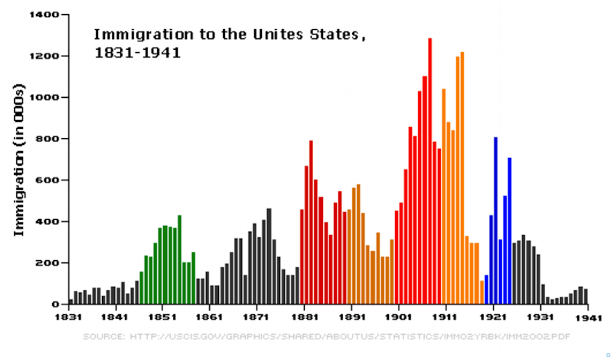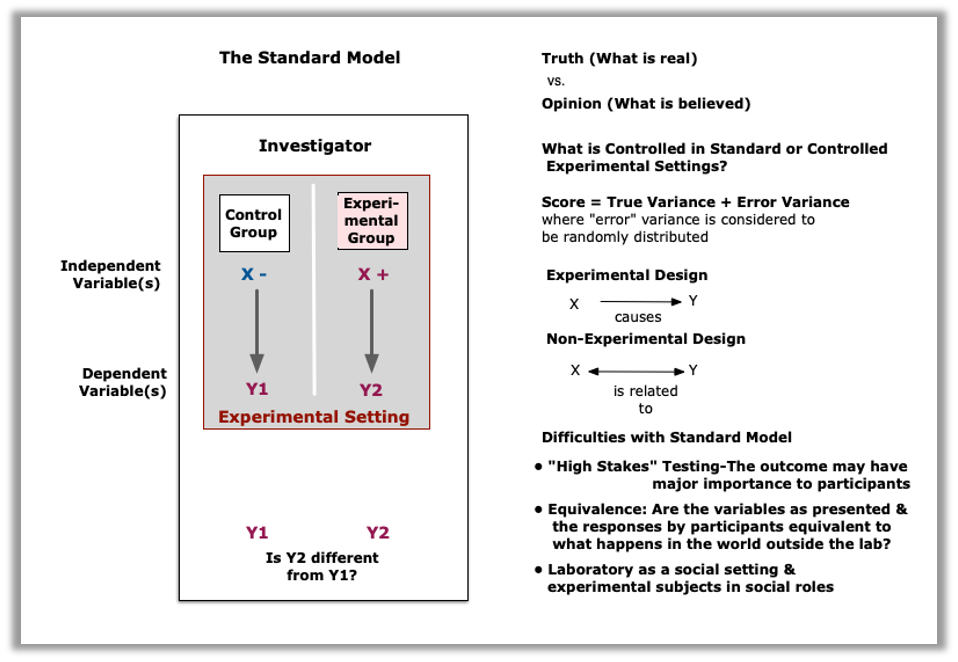Sept. 24, 2023
PSY 444
Story in Psychology: Narrative Perspectives on Human
Behavior
|
Sept. 24, 2023 |
PSY 444
Story in Psychology: Narrative Perspectives on Human
Behavior |
The "Standard Model"
- Psychologists and other social scientists of the first 70 years of the 20th century promoted what might be called “the standard model” for how social science should be conducted.
- They generally used either a mechanical or organic metaphor for how the world worked.
- They extended the methods used in natural science laboratories to include systematic study of human beings as “research subjects.”
- They upheld the empiricist commandment that nothing scientific should be accepted as true unless objective evidence demonstrated beyond a doubt any hypothesized statement of fact.
Some Major Factors Influencing the Development of Psychological Research & the Standard Model

A. Immigration to the US: 1870s-1910s.
- The Second Great Wave of immigrants from Europe came from Eastern and Mediterranean Europe (e.g., Russia, Italy, Greece, Poland, etc.) bringing the languages & customs of these areas.
- America needed to integrate these recent migrants, but found it more difficult than with previous groups who spoke English.
B. Urbanization of the US: The Move from Rural Areas to Cities
- In 1870 only about 25-30% of Americans lived in urban settings; that proportion doubled to half the population by 1920, 60% by 1930, and approached three-quarters by 1970.
C. Industrial Development & the Need for Efficiency, Social Management, & Control
- By the end of the first decade following the Great War (that is, at least by 1930), experimental psychology had already established a predominant role in research universities and had begun to enchant the popular imagination (as well as that of corporate America) with its prowess and usefulness.
- The Great Depression (1929-1941) and the US involvement in the Second World War (1941-1945) provided great challenges about how to help workers, families, and energize the nation.
- World War II made urgent demands upon psychologists to help mobilize, classify, and train the 12 million men who eventually entered the armed forces and millions of others in the civilian sector who also contributed either to defense industries or government agencies.
- Additional contributions by psychologists included rumor control and morale building on the home front as well as propaganda and "psyops" countermeasures in the theaters of war and occupation.
- In the post-War period after 1945, new challenges arose:
- both suburbanization and the socioeconomic decline of cities in the Northeast and Midwest,
- the need for sufficient consumer demand to sustain suitable levels of economic production, and
- answers to long-ignored cries for redress of grievances arising from segregation, socioeconomic inequality, and the absence of civil rights among Black Americans and other minorities.
Elements of the Standard Model1. The Experimental Laboratory
- 86 colleges & universities had psychology labs in US & Canada by 1920
- Emphasis upon controlled conditions for research on sensation/perception & animal behaviors
- Division between researchers versus subjects (or "participants")
- The study of "variables" as factors to be studied independent of their context in the actual world
2. Logical Positivism & Operational Definitions
- 19th century French sociologist & theorist, Auguste Comte, argued for positivism, that is, society should be studied only on the basis of empirical scientific evidence by using controlled experiments and statistical analysis.
- In Austria after the First World War, the "Vienna Circle" of philosophers, scientists, and mathematicians argued that there are only two types of knowledge: logical analysis and empirical experience. Any scientific statement of what was claimed to be true had to rest on empirical verification. This is known as logical positivism.
- Rejection of any appeal to or demand to the need for understanding a reality as opposed to finding what law or mathematical formula explained a reality.
- Operational Definitions: The object of psychological research (concepts or notions such as intelligence, depression, extraversion, prejudice, etc.) is synonymous with means or methods of measuring it. The score on a test or quantity in an experiment IS equal to the concept or notion.
- The entities investigated by the physical sciences such as mass, length, and velocity were meaningful only insofar as investigators coupled their discussions to the concrete methods of their research itself.
- Psychologists in the 1930s found operationism to be a compatible standard for an experimental science like psychology. For much of the 20th century, social science found that an operational definitions was the concrete expression of the scientific method itself.
- This belief is one which graduate students in North American schools after the 1920s heard repeatedly in research methods classes: one must explicitly demonstrate the use of empirical, observable means to explore any psychological construct.
3.Applying Social Science
A. Psychological Testing
- IQ, SAT scores
- Tests of personality (MMPI, etc.)
B. Industrial Psychology
- Scientific management by which workers abilities were matched to jobs
- Study of worker productivity & how to increase it
C. Advertising
- Study of consumer behavior & motivation (Walter Dill Scott)
- Advertising requires consumers to remember it. Hence, it should use repetition, intensity, positive associations, & ingenuity = frequent vivid images, using well-known persons, cleverness in ads (e.g., Superbowl commercials). Appeals to basic human instincts like safety and nurturance.
- Behavioral analysis in business (conditioning), applying Freudian theory to increasing sales
- Marlboro: The Tattooed Man (1950s-60s) and "Cowboy/Marlboro Country (1960s+) the most successful advertising campaign in history. By early 1950s, this cigarette brand was on the verge of collapse. By 1992, Marlboro was the most valuable brand in the world with a value of US$32 billion.
